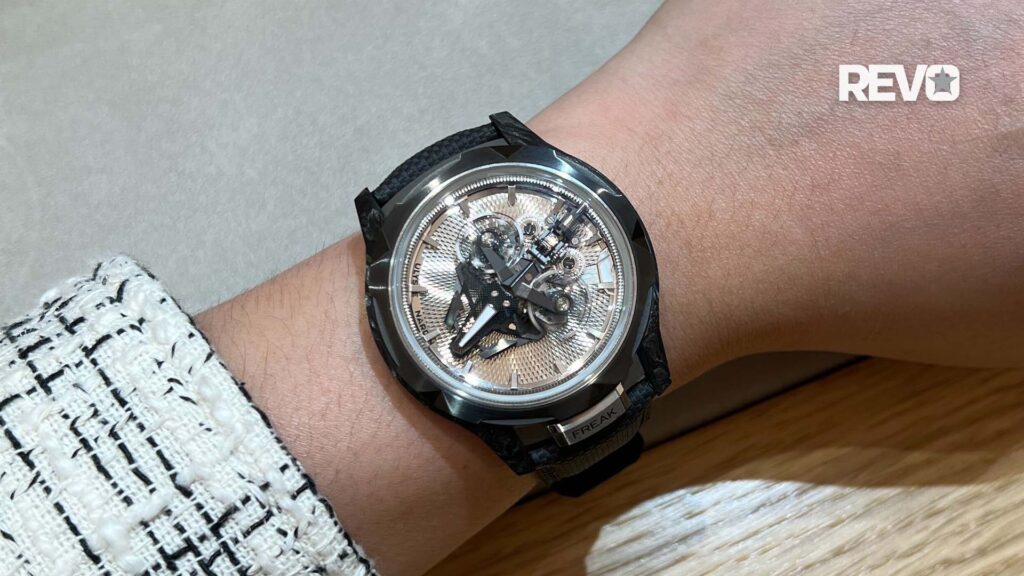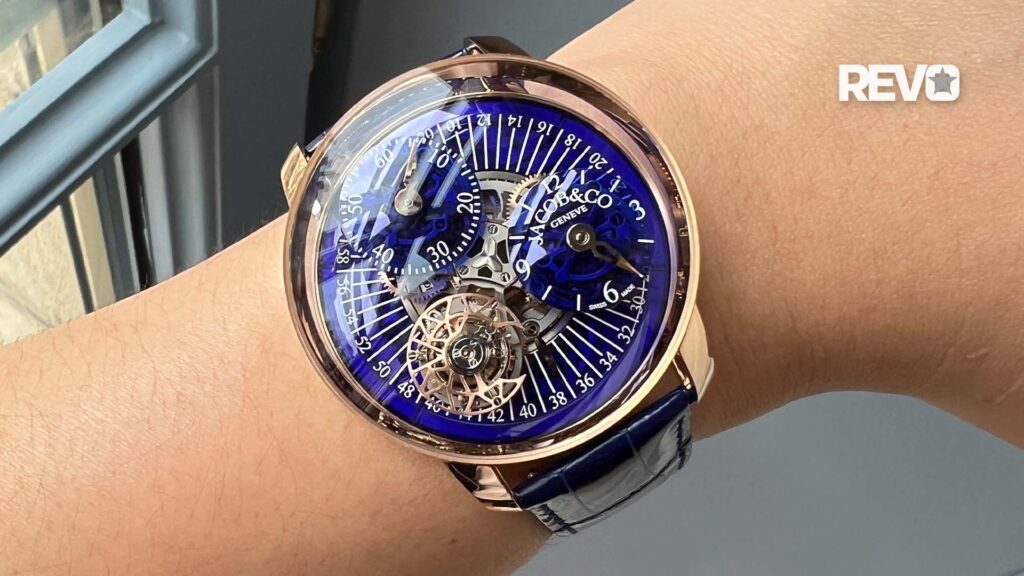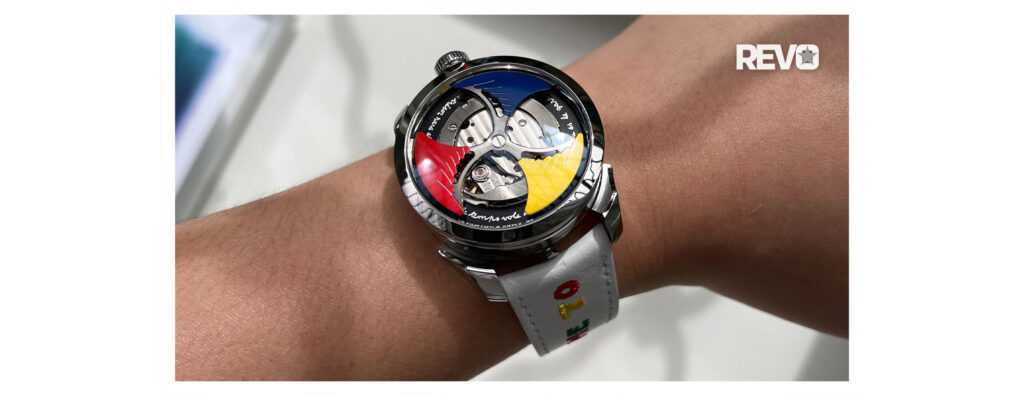Junghans
Junghans Max Bill Kitchen Clock
Max Bill Story
Max Bill was one of the principals of the Bauhaus design movement as an artist, architect, painter, sculptor, and a product designer. At the age of 16, he began his training as a silversmith at the School of Applied Arts in Zurich and had two of his student works selected for exhibition at the “Exposition internationale des arts décoratifs” in Paris. His personality as a growing artist and independent spirit had him expelled after only three years. He took his winnings from a poster contest with the Suchard chocolate manufacturer and moved to Dessau to join up with the work of the Bauhaus school. He studied for two years under the likes of Albers, Kandinsky, Klee, Moholy-Nagy and Schlemmer and carried the theory of minimalist design and principles of ethical art that he gained throughout his career.
In the 1950s Max Bill was invited to collaborate with German watchmaker Junghans, on a number of timepieces including wall clocks and watches. Max Bill and his students at Ulm designed the now famous ceramic “Max Bill Kitchen Clock” in 1956 that exemplified the clear philosophy of form follows function. The clock was bright and cheerful, but also highly functional with a built-in timer and a clean, minimalist design that prized legibility and quality.
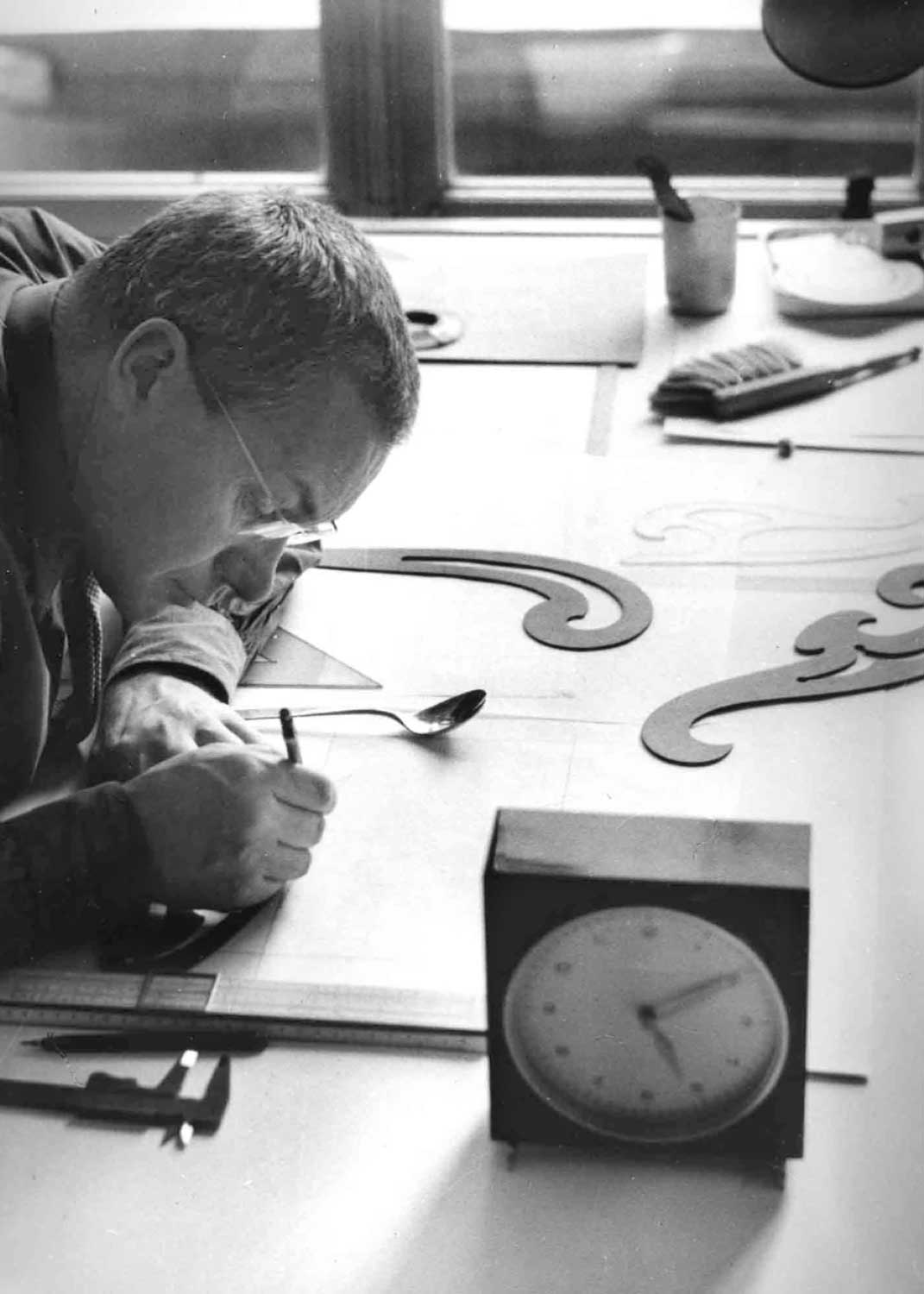
Max Bill, circa 1959
The Original Küchenuhr
Max Bill had a weak spot for watches and clocks, as he explained “This must have been because one of my grandfathers was a watchmaker and we had beautiful old watches at home…….. Two of these clocks were especially dear to me from childhood on: a wall clock and a pocket watch. …… Again and again I had to compare all the clocks I came across with these two clocks from my youth. And only very rarely did I find clocks that could stand the comparison.”
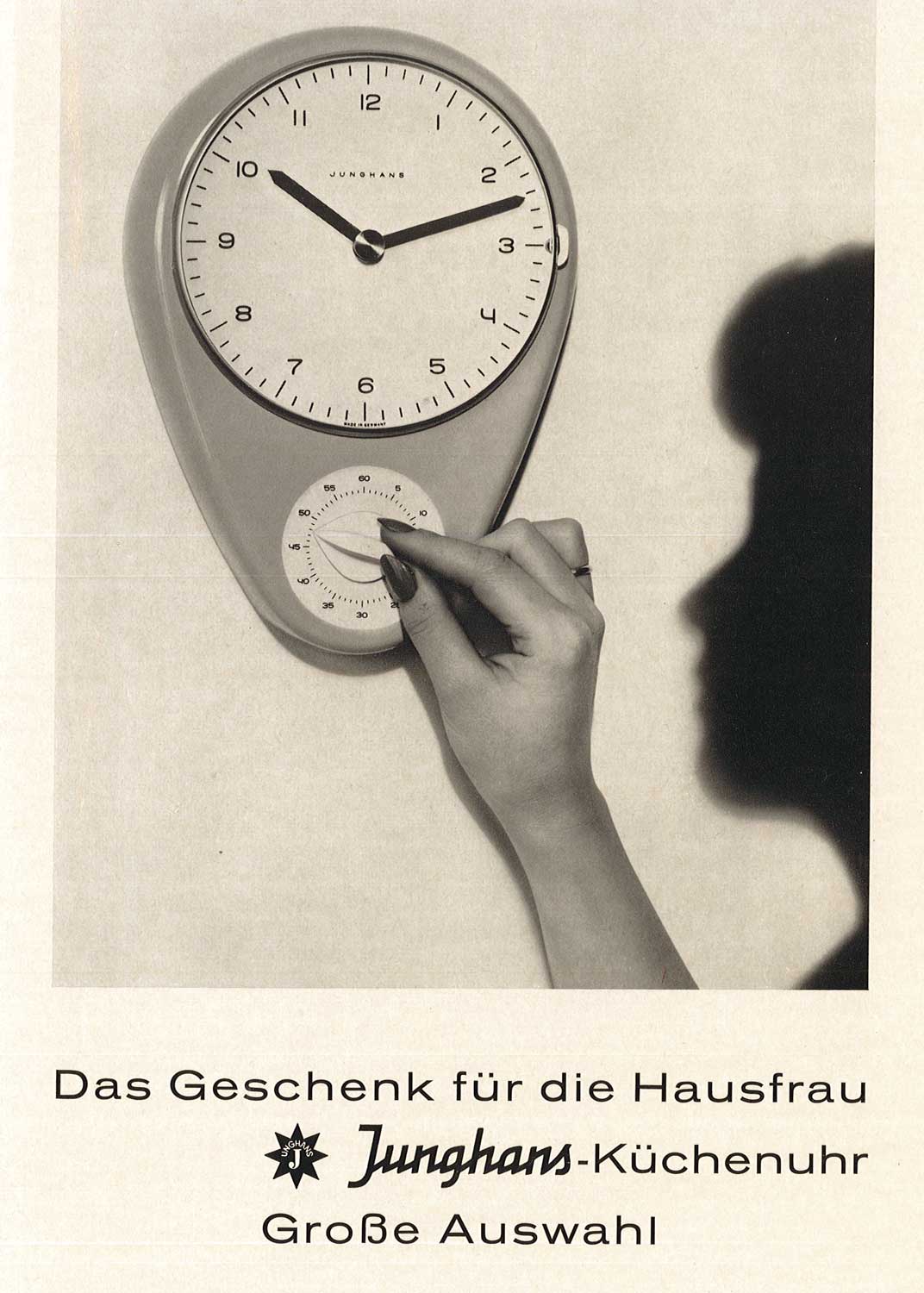
The Junghans Küchenuhr advertisement during 1956
Junghans manufactured thousands of Max Bill kitchen clocks, and they were commonly seen in German households. However, finding a pristine example now is considered a rare collector’s item.
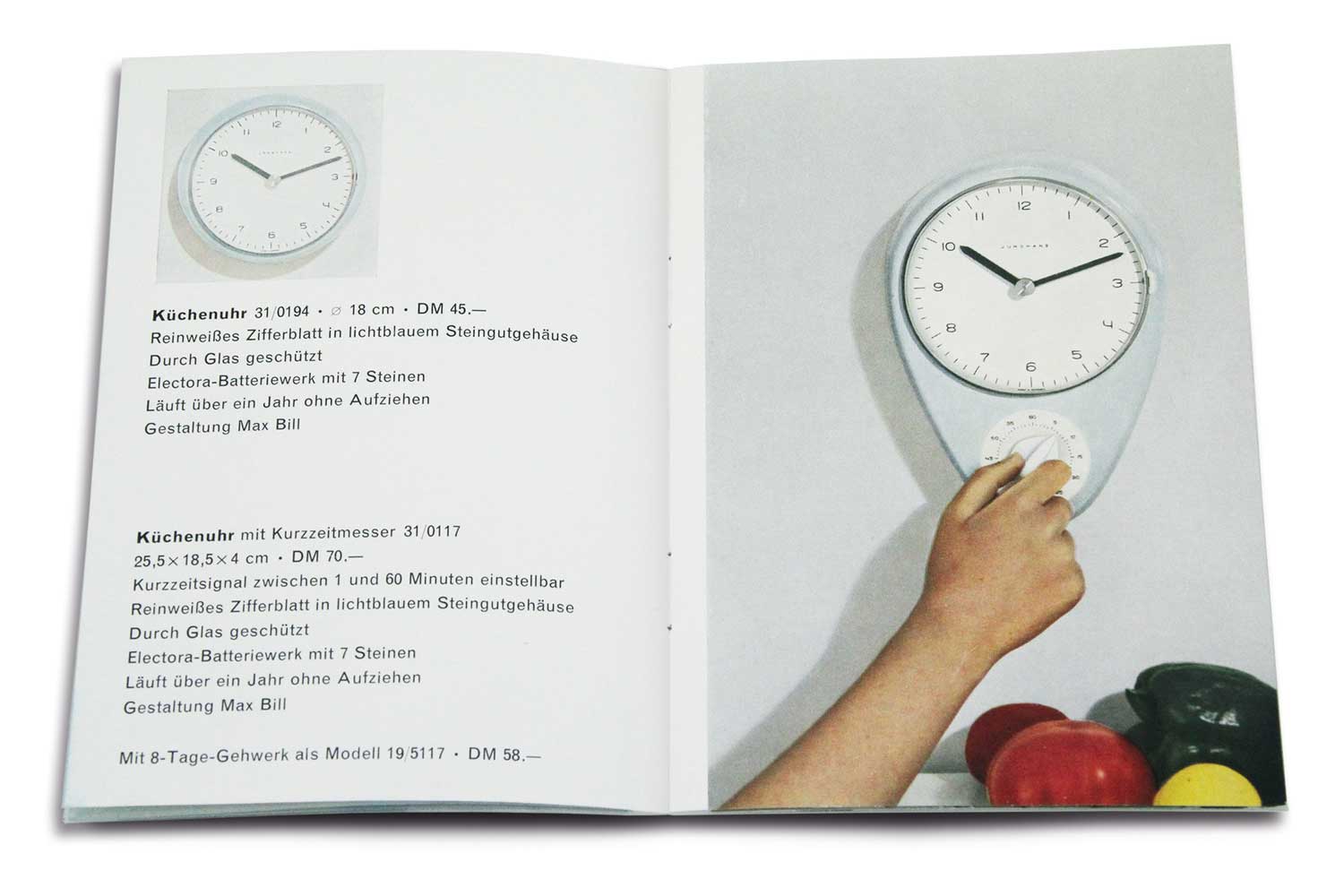
A catalogue during 1960s
The Clock
In 2021, Junghans relaunched the original Max Bill collaboration Kitchen Clock from 1956 in light blue ceramic with a white glazed dial and featuring the gorgeous typography developed by Max Bill.
The case is crafted in ceramic in a cheerful light blue with a glossy glaze finish. Surrounding the dial is a thin chrome-plated bezel so reminiscent of the 1950s aesthetic. Behind the domed sapphire crystal, the dial is a clean white glazed surface with very little decoration or distracting detail. The black hands are minimal and precise, pointing out the stylized hour numerals that Max Bill first designed in 1956 for the original clock. An uncomplicated minutes track is printed just inside the bezel. The Junghans logo, printed just above the center of the dial, completes the quiet and purposeful design.
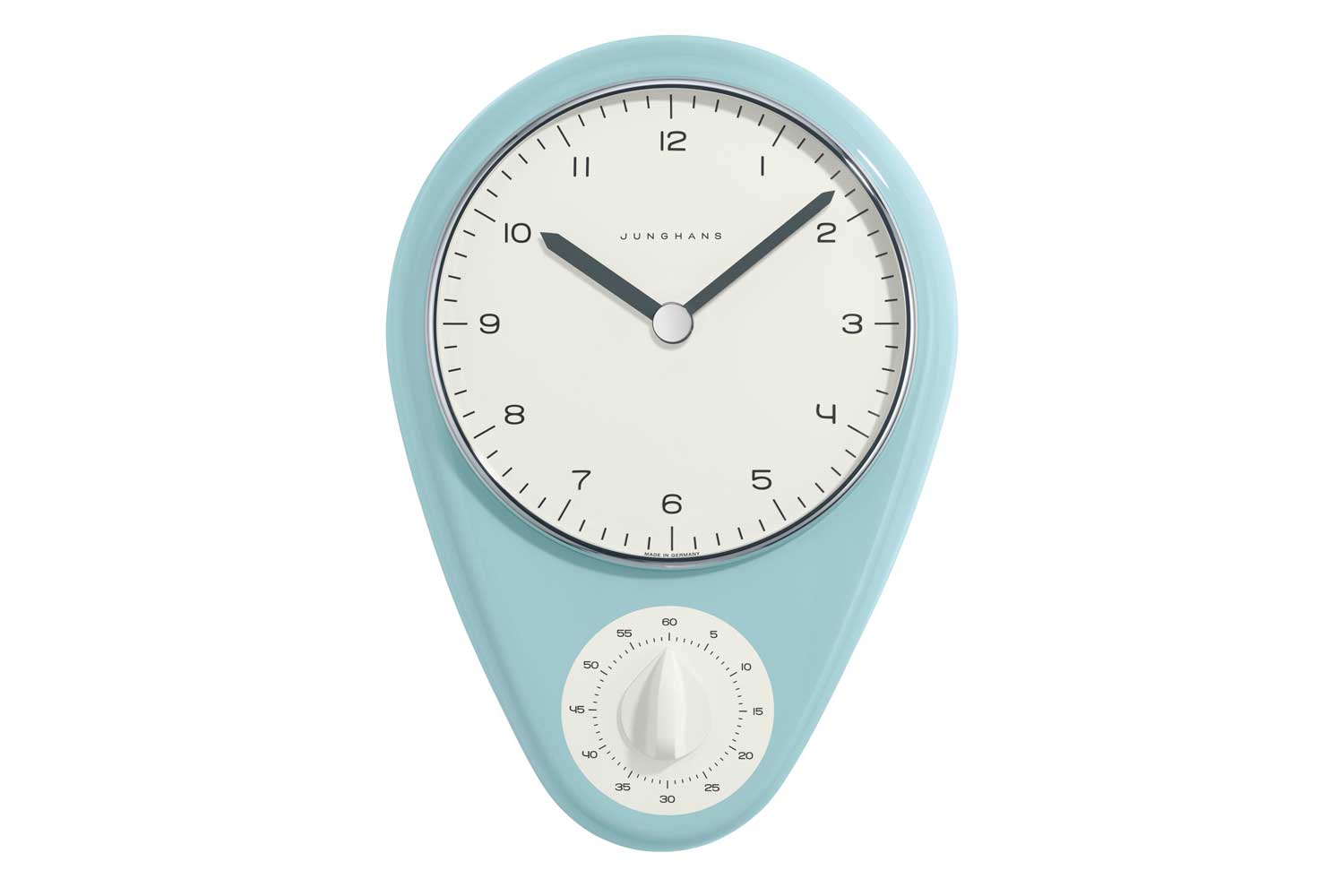
The 2021 Junghans Max Bill Kitchen Clock in light blue ceramic case
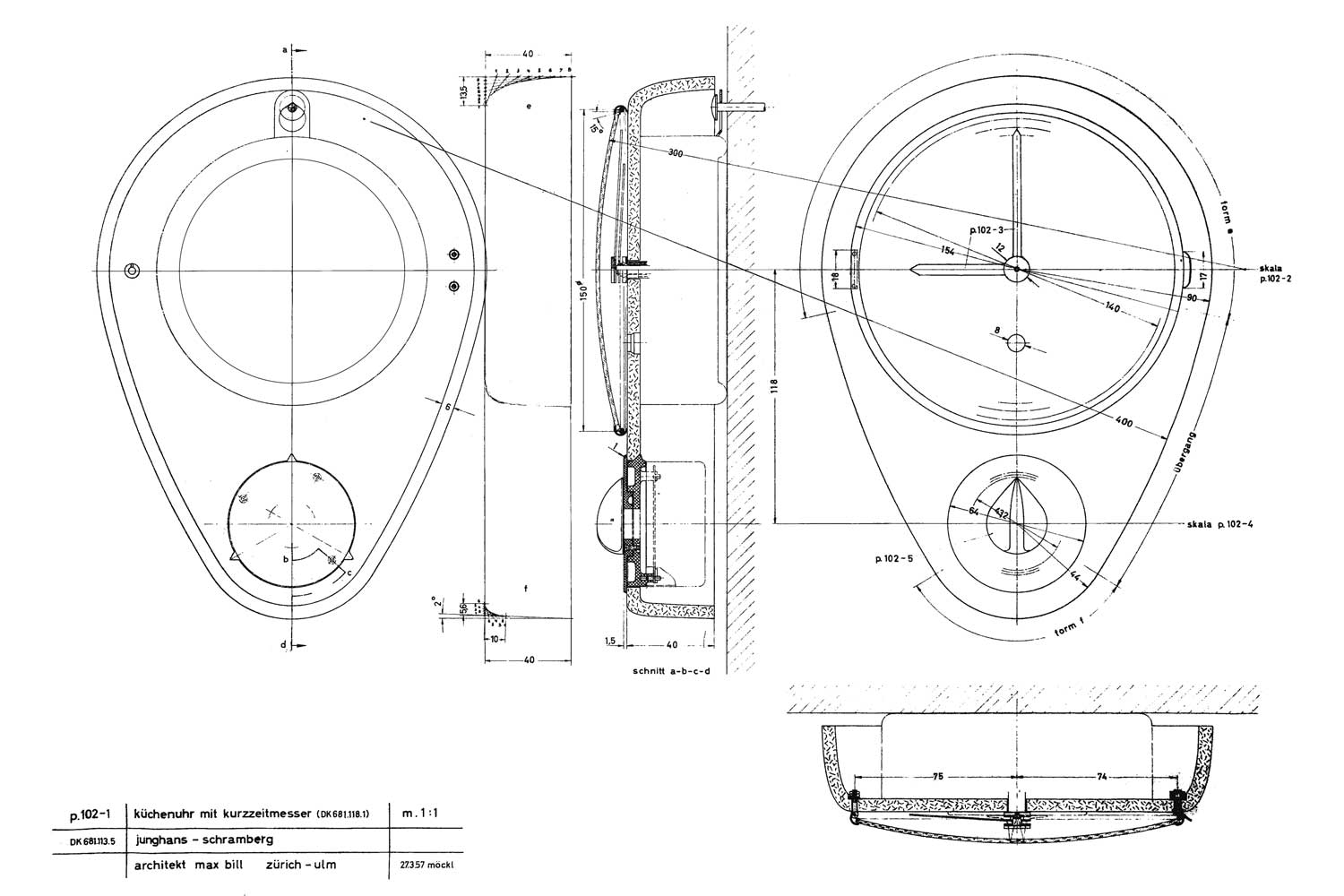
Draft for the Max Bill Kitchen Clock
A Timeless Classic
The reissued Max Bill Kitchen Clock would be a charming, vintage-inspired addition to any kitchen. As was intended, this wall clock provides the utility of a timer for cooking and accurate timekeeping as well as being attractive retro art for any kitchen.
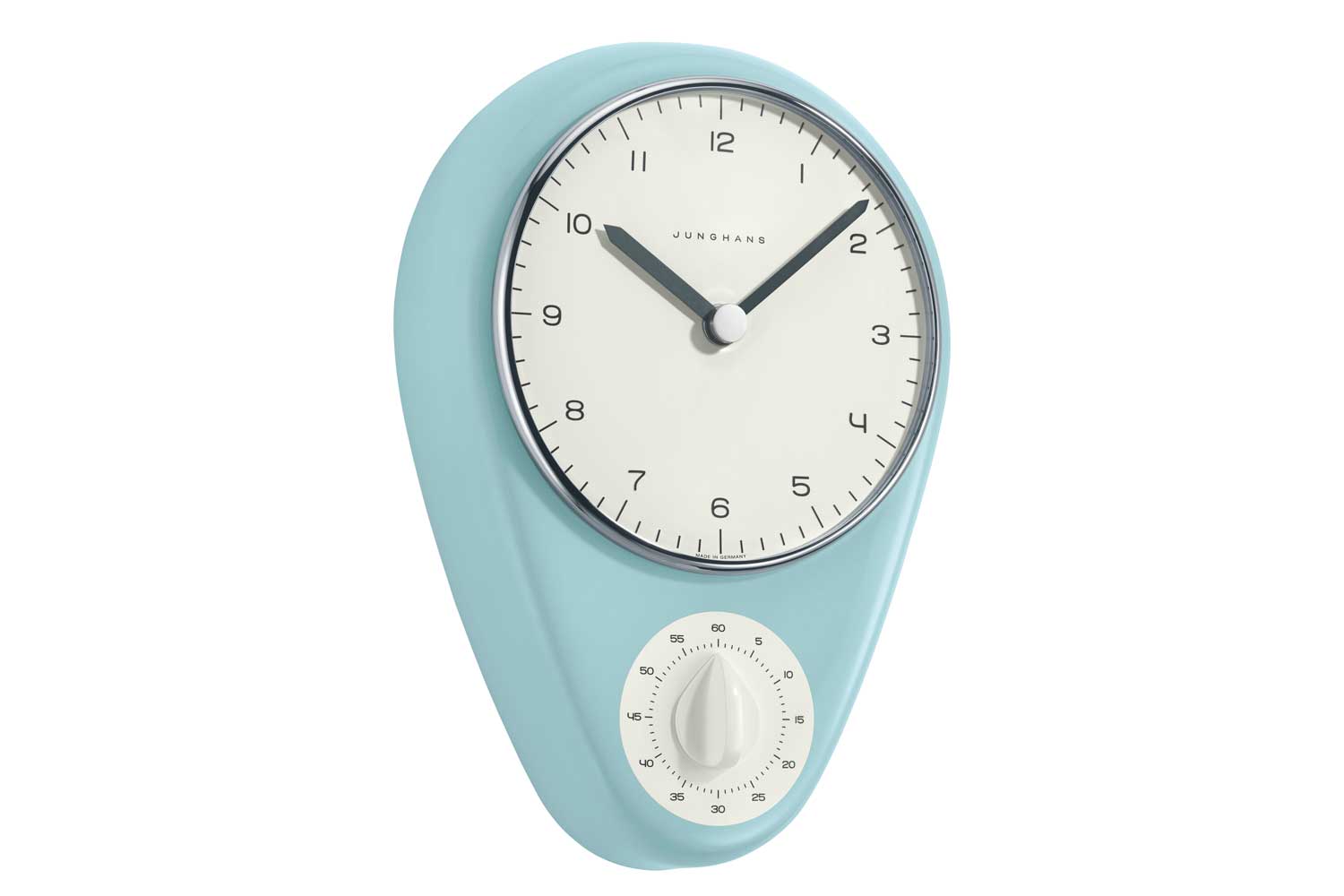
In the case of the Max Bill Kitchen Clock, form and function have come together to create a beautiful and useful tool for any home.
Tech Specs
References: 377/1100.00 (Radio-controlled); 362/1100.00 (Quartz)
Case: Glazed light blue ceramic, chromed bezel (180mm x 252 mm x 56mm)
Movement: Radio-controlled movement J761 (reception from time signal transmitter DCF77 for Europe); Quartz movement J738
Functions: Hour, Minutes and mechanical 60 minute kitchen timer
Price: Radio-controlled version: USD 600; Quartz version: USD 550




